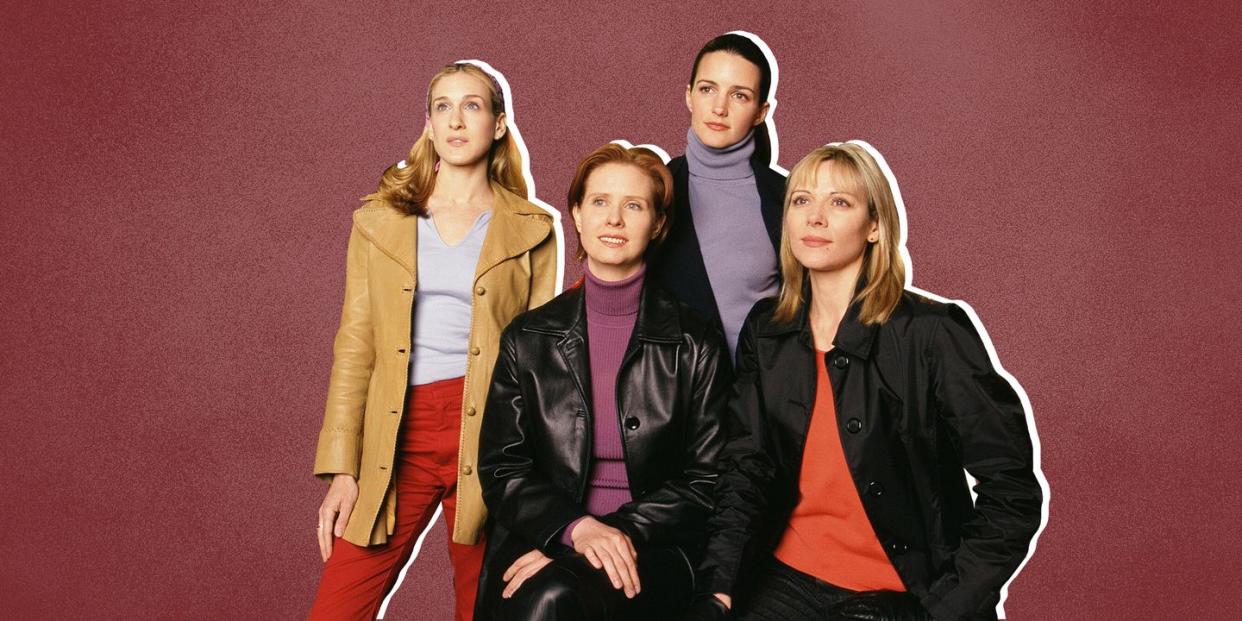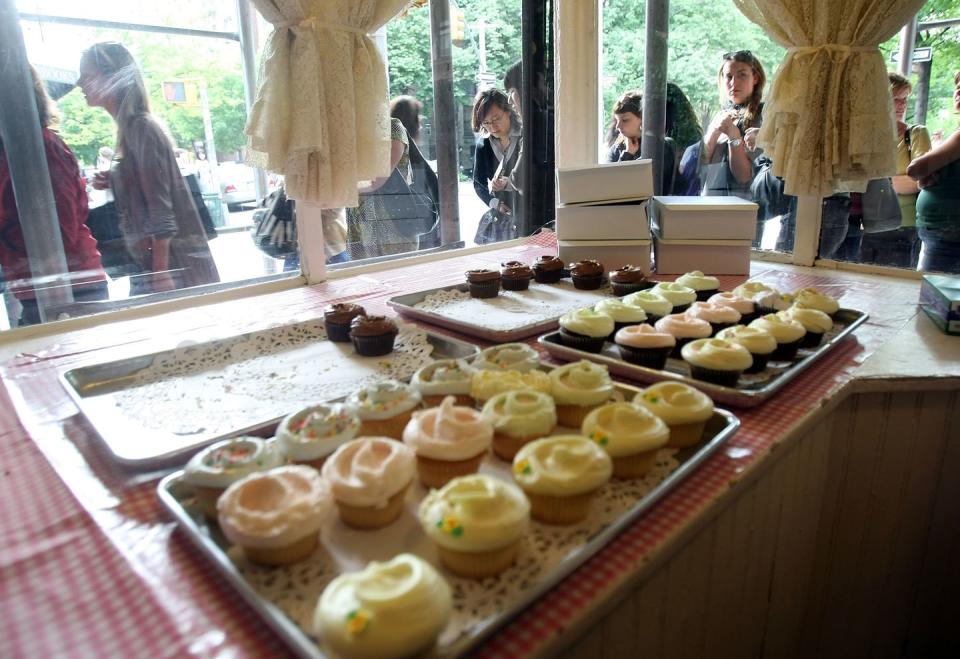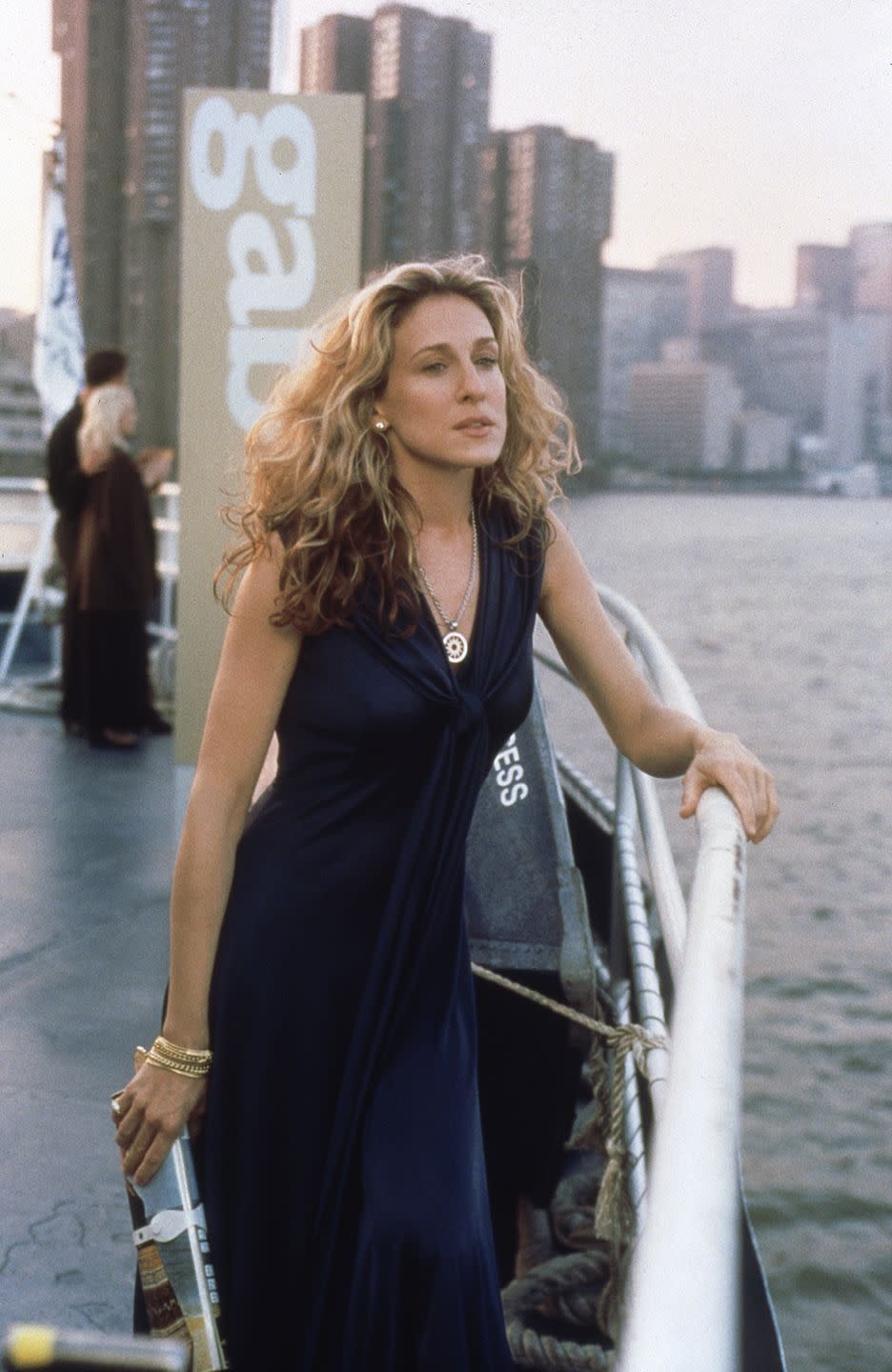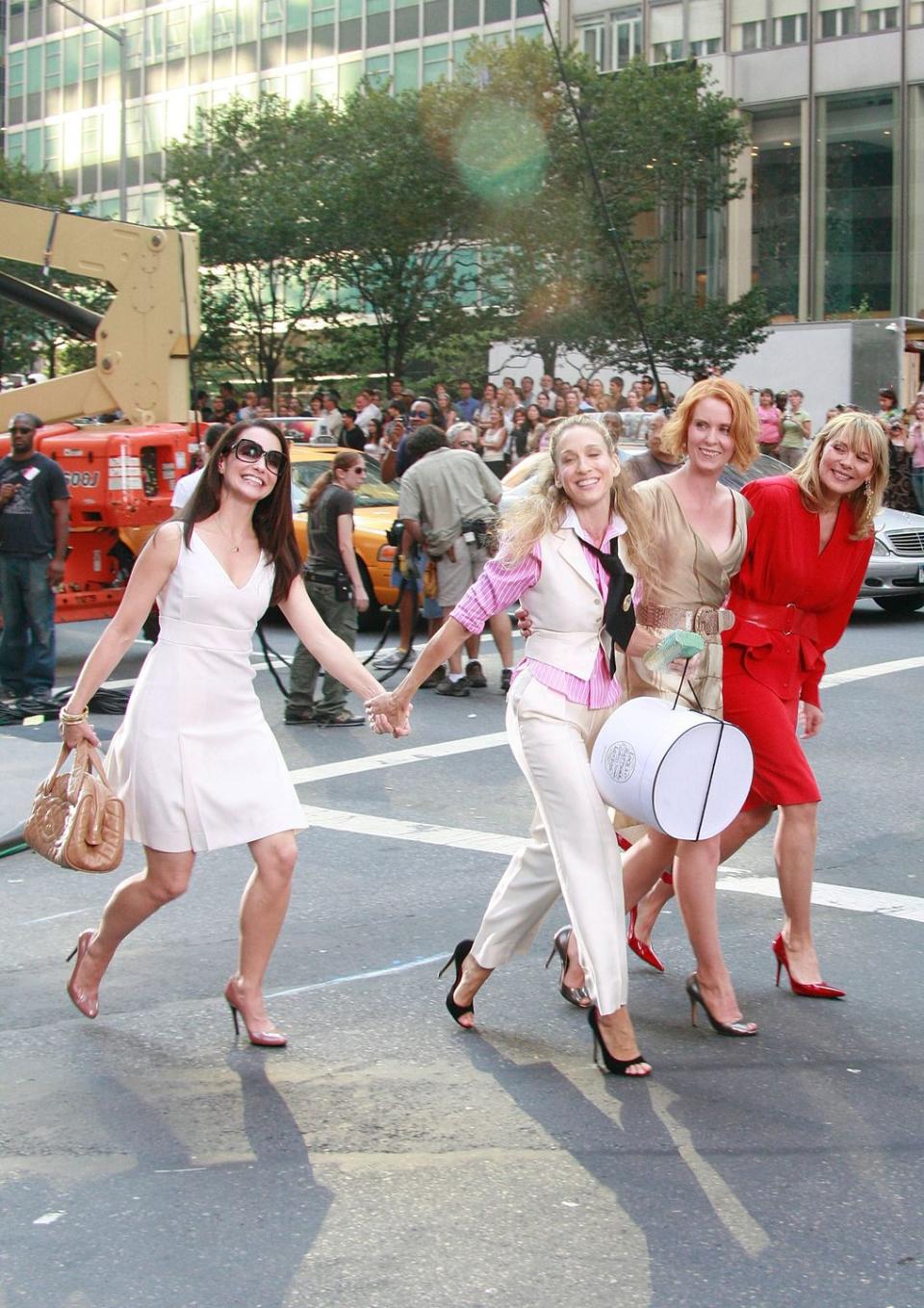How Sex and the City Helped New York Recover After 9/11

When Sex and the City started shooting on the streets of New York, in 1998, it was an annoyance to Manhattanites, a burden to businesses that didn’t need cameras blocking their entrances. Though many shows were set in the city, few were shot here. Friends didn’t need permits to film at Central Perk, because Central Perk existed only on a Los Angeles set.
Three years later, Sex and the City’s insistence on shooting the real city had made it a kingmaker among local businesses and brought streams of starry-eyed tourists and new residents to town. The show sent throngs to the Pleasure Chest and Sushi Samba, turned Magnolia Bakery from a sleepy West Village neighborhood spot into a tourist scene requiring a bouncer, and transformed the Meatpacking District into hot real estate. The show’s four central women—Carrie, Charlotte, Miranda, and Samantha—made being single in Manhattan look so good that young people from across the country swarmed the island, dreamy with visions of endless brunches, bottomless drinks, big apartments, jobs that would effortlessly support designer shopping sprees, and romantic prospects aplenty.

I was one of them.
When the Twin Towers came down, on September 11, 2001, I was packing to move from Oak Park, Illinois, to Edgewater, New Jersey, just outside the city. The terrorist attack did not change my plans. I drove toward the still-smoldering city a few weeks later, confident in the life I would lead in the place that Carrie and company had made look so sparkling and safe.
I have no doubt that Sex and the City helped its hometown, which the cast and crew often referred to as “the fifth lady,” to recover from the worst tragedy that had befallen it in modern history. The show’s narrative nods to the events of 9/11 itself were deft, subtle, and moving, while it continued to portray New York City as the greatest, freest, and most glamorous place on earth, soothing those of us who had just arrived. Young people like me continued to pour into Manhattan seeking that life, and even finding our own versions of it—usually with a lower shoe budget and a tinier apartment, but the essence was there.

TV can, in some circumstances, keep us going after the kind of devastation that makes keeping going seem unfathomable. It’s worth remembering this, those little sparks that began to get us going again after 9/11, as we face the ravages that the Covid pandemic has wrought—emotionally and economically—on New York City, the nation’s first major hot spot for the virus. For a city so shaped by its TV and film images, the right image at the right time can work magic.
Sex and the City was very much of its time, reflecting and shaping the materialistic bombast of late 1990s and early 2000s culture as it ran on HBO from 1998 to 2004. But underneath its glam lurked a soft soulfulness. And that soulfulness was on clear display by the fourth season, which ran in two parts—one before 9/11 and one four months later, in January 2002.
The six episodes that ran that January and February, the first to appear after the attack, made no direct mention of that day, and for good reason: They had been shot before it happened. But by a startling coincidence, two unintended tributes were already on film. In the second episode, there’s a loving shot of a souvenir snow globe of the Twin Towers. And the season finale, titled “I Heart NY,” emerged as one of the sweetest 9/11 elegies television had to offer, even though it hadn’t been written as such. Showrunner Michael Patrick King had simply intended to celebrate classic New York City, as Carrie has one last night with her fraught love, Mr. Big, before he moves to Napa. They go on a carriage ride and do the twist to “Moon River,” which playing on a phonograph in Big’s almost empty apartment. The next morning Carrie reflects in voiceover as autumn leaves start to appear: “Seasons change. So do cities. People come into your life and people go. But it’s comforting to know the ones you love are always in your heart. And, if you’re very lucky, a plane ride away.” Though it was written before the attacks, actress Sarah Jessica Parker recorded her voice track a week afterward, inflecting her delivery with that knowledge.

When I arrived in the New York City area in October 2001, I was looking for my own version of Sex and the City. At that time I was planning to marry my college sweetheart after 10 years of dating; we got a condo together in Edgewater, just across the Hudson from the city. I wasn’t seeking the show’s vision of single life, but I was looking for the shimmery media life that Carrie Bradshaw’s career as a sex columnist promised. After having been a local newspaper reporter for a few years, I wanted to work for major magazines and write words that important people read and go to premieres and meet authors. Astonishingly, I got to do all of that. And as I saw the overwhelming number of options the city had to offer—of inspiring and fascinating people, of culture and events and lives—I took my Sex and the City vision one step further: I ended my engagement and moved into my own apartment in the East Village. It was a hovel with a secondhand foldout sofabed, a shower in the kitchen, and a mouse. I could barely afford Aldo shoes and Urban Outfitters T-shirts. I felt just like Carrie anyway.
Sex and the City returned for its fifth season in July 2002, with its first episodes written and filmed after 9/11. The first episode, “Anchors Away,” has the four women attending a Fleet Week party, flirting with young military men in the name of patriotism. Carrie sparks with a sailor from Louisiana named Louis, but her true allegiance becomes clear when he insults New York City and she loses interest. “If Louis was right, and you only get one great love, New York may just be mine,” she concludes. “And I can’t have nobody talking shit about my boyfriend.”
I’ve felt this way a lot as we begin to wade through the wreckage that the pandemic has wrought on the city. We had lost more than 32,000 people to Covid as of late September, which is nearly 12 times as many as we lost on 9/11. The economic devastation of the pandemic’s shutdowns touched every block of the city, while 9/11 was concentrated downtown. The iconic discount store Century 21, prominently featured on Sex and the City, survived 9/11 even though it sat right next to the site. It did not survive Covid. There’s no doubt that this recovery is going to be more arduous.
A spate of online essays positing that New York City is over, written by the many who have fled the city since the pandemic hit, have only made me—and other New Yorkers, including Jerry Seinfeld—more defensive of our town. The fighting spirit is there. We’ve put on our masks and gotten back to living the best we can. The bridges’ bike lanes whizz with cyclists providing their own safe transportation. The outdoor dining areas, strung with twinkle-lights and sharing the road with cabs and cars, make the streets feel like festivals every night. As Carrie said, “That’s another reason I love New York. Just like that, it can go from bad to cute.”

Even though TV watching has played a critical part in lockdown life, it’s hard to imagine any single show now having the kind of effect Sex and the City had on our post-9/11 recovery. Because the proliferation of streaming services has led to many more options with much smaller audiences, hit shows don’t have the impact they had 20 years ago. Instead, we may receive our televisual healing in smaller doses, in the many series that have filmed here in recent years, thanks to the work of Sex and the City, which paved the way for city shooting.
It might be a clear Sex and the City descendant like The Bold Type or Younger that lures some optimistic newcomers with its visions of ambitious women in media. It might be The Marvelous Mrs. Maisel’s throwback to 1960s Manhattan that encourages others to build anew, inspired by the glitz, style, and wit of the past. It might be the reboot series High Fidelity’s soothing mix of new and old—Zoë Kravitz in a role once played by John Cusack in the 2000 film, working in a record shop amid modern Brooklyn’s frosés and climbing gyms—that persuades some New Yorkers to stay put for the reimagining of the city that is still to come. “Anything is possible,” as Carrie said. “This is New York.”
You Might Also Like


